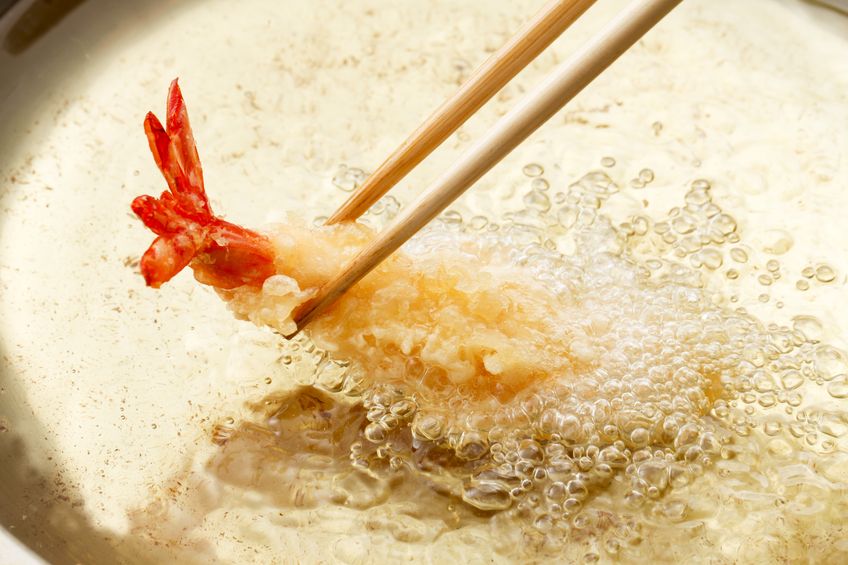8 Things You Probably Didn’t Know About Tempura
Jul 8, 2017 • Therese Aseoche

Jul 8, 2017 • Therese Aseoche
One of the most loved dishes in Japanese cuisine is tempura — that battered and fried seafood and vegetable goodness. But have you wondered about some of the interesting facts surrounding it? Here are just a few things you should know for better appreciation of Japan’s indispensable dish!
You’d know you’re at a high quality tempura shop in Japan when they don’t play any background music. According to tempura chefs, they only need to rely on the sounds of tempura being fried as ambience for their restaurant. To them, you must first enjoy the sound of the ingredients being cooked before you enjoy the flavor.
Ebi or shrimp tempura is the kind of tempura dish we know the best, and it’s partly because Japanese tempura chefs recommend you to order it before you order anything else off the menu. Because prawns are the only seafood item to turn red when you cook it, ordering them first lets you appreciate the visual appearance of the dish.
In certain restaurants, you might come across a menu item that is conger eel tempura. Although it seems exotic and intriguing, chefs will highly discourage you from ordering this first. The ingredient requires a higher cooking temperature or else it won’t be crispy enough. If eel is cooked first, the oil will be ruined and the aroma will dissipate. Local restos might not serve this, but this little trivia might be of use to you if ever you get to dine in an authentic Japanese tempura shop!
Japanese tempura chefs tend to coat tempura differently depending on how they’re served and eaten. When you eat tempura on its own, they’re usually lightly coated with batter. When served on a rice bowl, tempura is cooked with a thick batter coating that covers the ingredient completely so that it’s able to soak up the tempura sauce poured all over the rice.
Contrary to what you may think, the grated daikon radish that’s always served alongside tempura isn’t the palate cleanser. Although it could be, it’s considered more as a condiment. The true palate cleansers for tempura are vegetable tempuras because of their sweetness.
You don’t always have to dip tempura in its designated tentsuya sauce. Some restaurants will provide you with dipping salt (arajio), of which you could sprinkle a bit on the prawn tempura and eat as is. Doing this enhances the flavor of the tempura which is usually cooked without any seasoning.
Just like ramen, tempura is not a Japanese original! According to Shizuo Tsuji’s “Japanese Cooking: A Simple Art,” tempura was introduced to Nagasaki locals in the 16th century by Portuguese missionaries who ate deep fried fish in a festival called “Temporas” (which was believed to be the origin of the word tempura).
When you’re at a tempura restaurant in Japan, always take the seat directly in front of the deep fryer. In Japanese, this seat is called nabemae. Customers would make reservations in advance for that seat because it lets you appreciate the chef’s skills, and lets you savor the sight, sound and flavors of the tempura.
Do you know any more random trivia about tempura? Share them with us in the comments section below!
Input your search keywords and press Enter.
